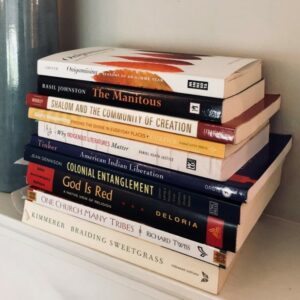A Review of indigo/the color of whiteness
For me, art is a profound invitation to step into uncomfortable spaces.
Art gives me courage to embrace loss because not all is actually being lost, something new is being created…
Art allowed me, and I think it allows many, to be present in pain.
~ Maggie Hubbard
Maggie Hubbard was involved in a church community in Seattle that was committed to racial reconciliation when she realized she didn’t understand her own race or how race functioned in America. Driven to learn more, she read James Baldwin, Toni Morrison, and A People’s History by Howard Zinn, and frequented the blog Stuff White People Like, which offered definitions of white-bread concepts like “sweaters, the fall, and casseroles.”
Not sensing any meaning in her own whiteness, she asked herself, “What does it mean to be white?” and began digging deep into reading and relationships, hoping to discover not only the right answers, if any, but the right questions as well. This led to her latest collection of paintings, “indigo: the color of whiteness.”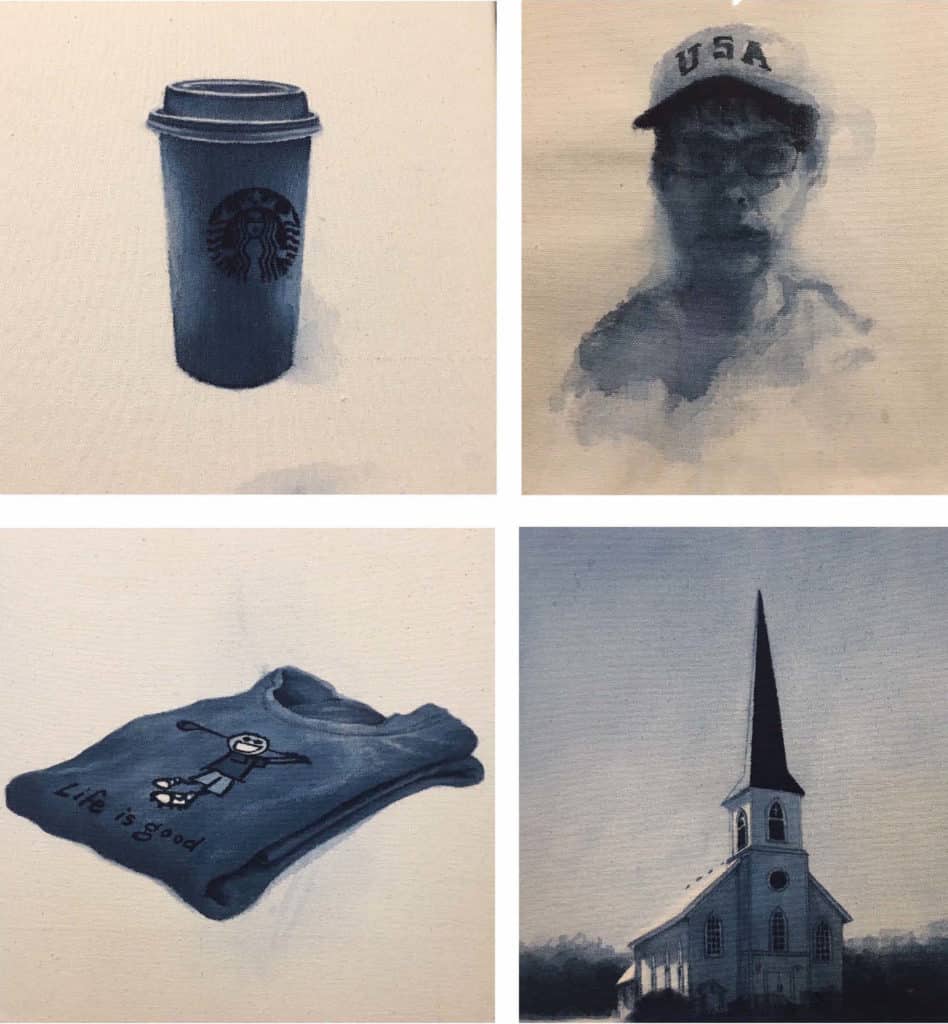
At Everybody’s Coffee in Chicago, located in the Wilson Abbey event space owned by inner-city Christian community Jesus People USA, Maggie Hubbard is flitting back and forth between huddles of people pointing, laughing, nodding knowingly, poised in front of her paintings. She beams as she greets family and friends coming in the door. Half the walls in the coffee shop are occupied by small square canvases, most of which are “icons of whiteness” that Hubbard has pulled from her Midwest American childhood, painted in indigo on a field of white.
Maggie has been taking her show to a number of cities. At each locale, she hosts a panel discussion, inviting local activists and educators to share the stage with her and answer questions about race, culture, and identity. In an interview with Christin Taylor for the Annesley Writers Forum, Hubbard says, “It’s a rather intimidating series to bring into public view, as I’m guessing most white people don’t like to align themselves with a collective identity they didn’t want or a large racial power system they didn’t author. But the more I explore this force of whiteness, the more I understand it to be a force that needs examining due to its dominating and violent nature.”
After people have been steadily entering the space for 45 minutes, Maggie addresses the audience about her process and her paintings, and about America’s long-term memory problems.
Some of the objects that symbolize whiteness to Hubbard are Starbucks coffee, Miracle-Gro, golf, baseball, an SUV with a Life Is Good tire cover.
“Whiteness is this aspect, this force, a psychological reality where important facts and history are erased, pushed away. There’s a forgetting, an ignorance. White Americans say, ‘We’re just white.’ We have these simple racial realities. For me, this work is combining middle-class, white America with a really charged material, and it keeps me focused on the question of what is the history behind this identity I thought was morally neutral.”
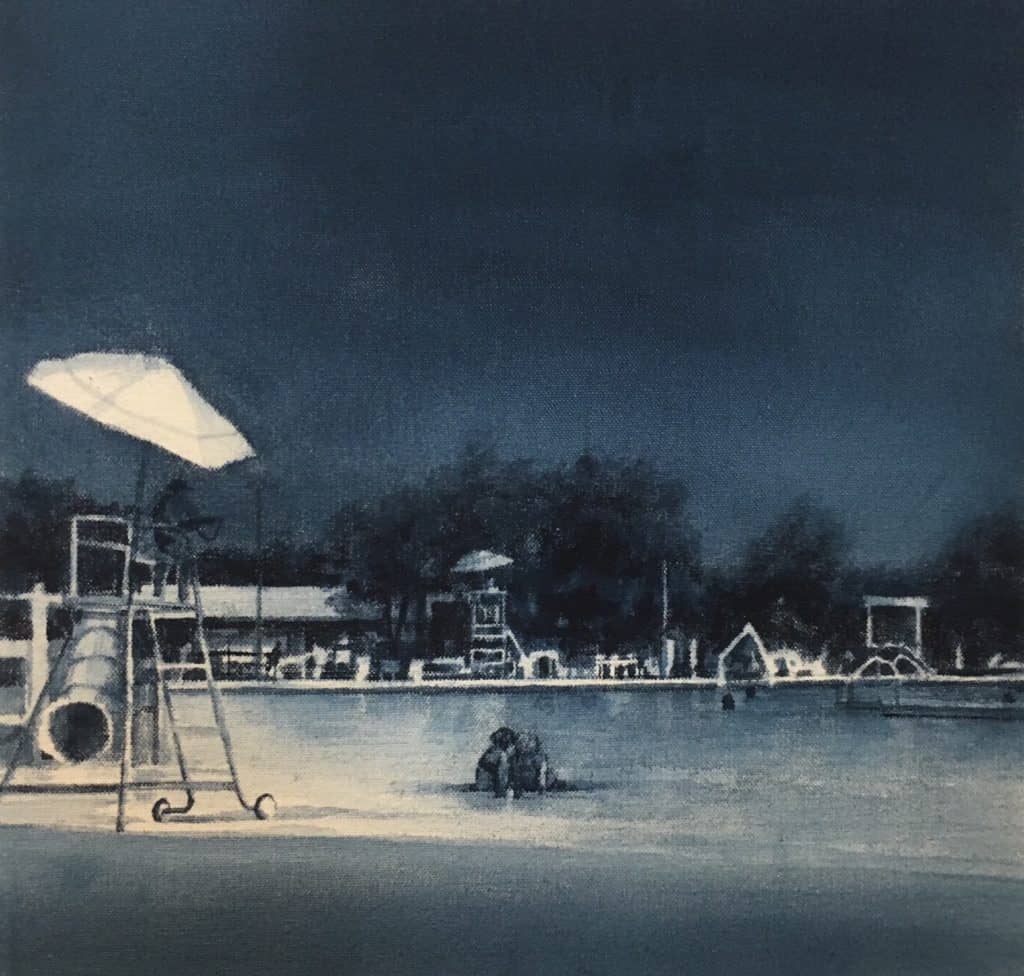 She shares some of the history of indigo, the color Levi Strauss used to dye the first pair of blue jeans. “There’s a much larger story there. In America from 1740 to the Revolutionary War, indigo was South Carolina’s second-largest commodity, where enslaved Africans produced indigo dye. There are documentation and drawings of enslaved people up to their chests in vats of water mixed with this plant, indigofera. There was a lot of power and colonization attached to this product that carries a lot of grief. There are even some communities in West Africa that would dye their clothing with indigo in times of mourning; it was a sign that something was lost, someone was lost.”
She shares some of the history of indigo, the color Levi Strauss used to dye the first pair of blue jeans. “There’s a much larger story there. In America from 1740 to the Revolutionary War, indigo was South Carolina’s second-largest commodity, where enslaved Africans produced indigo dye. There are documentation and drawings of enslaved people up to their chests in vats of water mixed with this plant, indigofera. There was a lot of power and colonization attached to this product that carries a lot of grief. There are even some communities in West Africa that would dye their clothing with indigo in times of mourning; it was a sign that something was lost, someone was lost.”
Maggie herself has lost someone. Not long after her graduation from college her father died. She painted objects that belonged to him as part of her grieving process; glasses, wallet, and workbench all immortalized in bereavement. She employed the same treatment to the objects in this show that symbolized whiteness to her, like Starbucks coffee, Miracle-Gro, golf, baseball, an SUV with a Life is Good tire cover, echoing the folded T-shirt that represents golf.
One painting is a self-portrait titled “2016. The Year I Realized I Was a White Woman”; others are a white-washed church with a tall steeple, a TV screen showing a football game, a large suburban swimming pool, and a Bible. A large painting of an old-timey baseball player is reminiscent of the quintessential American artist Norman Rockwell’s painting of the Cubs dugout with a batter on deck.
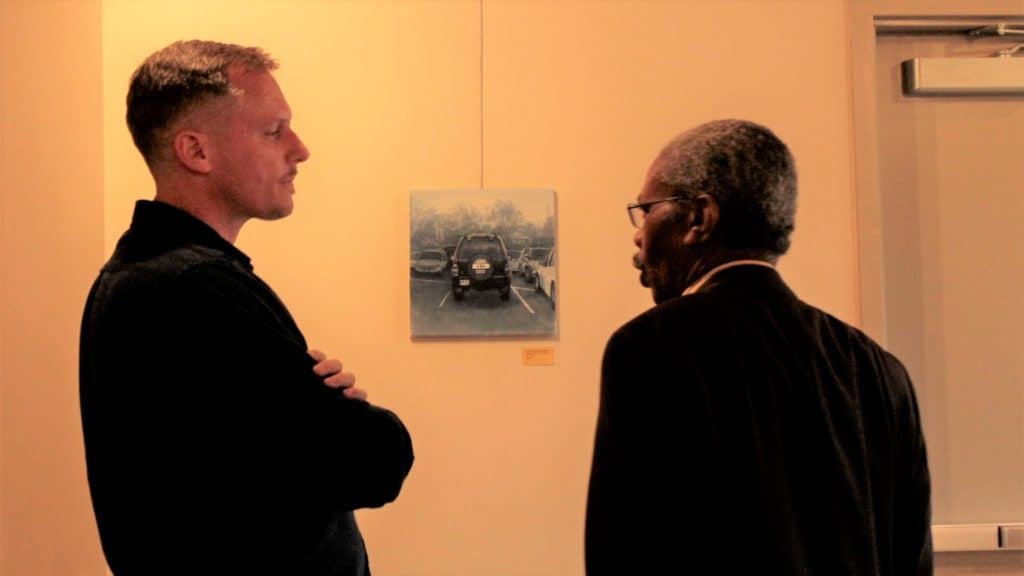
Maggie’s paintings elicit chuckles and nostalgia and deeper consideration as they challenge viewers to think about why these items represent whiteness and what the “urban” alternative would be. In the same way that Maggie used art to acknowledge and work through the loss of her father, these pieces invite the viewer to a public, collective grieving. In Maggie’s words, “Our public gaze has placed a microscope on the enormous category that is ‘white people.’ This has and will continue to unearth the realities of power and manipulation that gave birth to whiteness.”
“indigo: the color of whiteness” is a challenge to see whiteness for what it is with all its historic darkness and call ourselves to account for the ways we ourselves have been “color blind,” and have unknowingly contributed to the grief of minority people groups.
The art opening featured a panel discussion on race with Kathy Khang, director of campus access initiatives with InterVarsity Christian Fellowship/USA and author of newly-released Raise 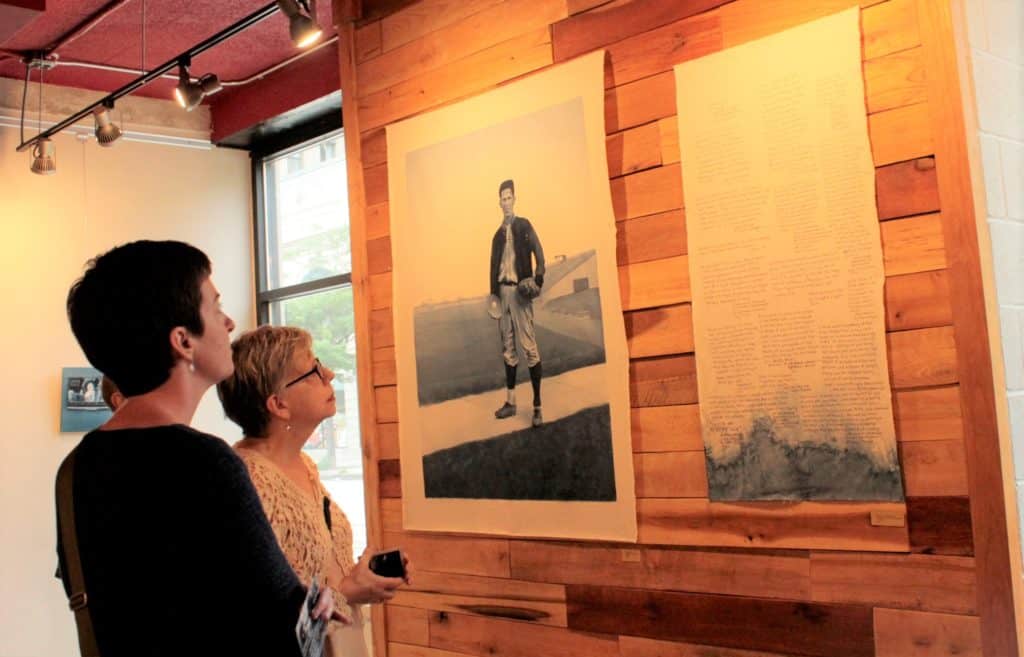 Your Voice: Why We Stay Silent and How to Speak Up. Jerome Nelson is the former superintendent of the Central Conference of the Evangelical Covenant Church. Ramelia Williams is the Lead Pastor of Ninth Hour Covenant Church, a mono-ethnic church being replanted as a multicultural congregation. David Swanson is a pastor on Chicago’s South Side at New Community Covenant-Bronzeville and writes on issues of race and reconciliation.
Your Voice: Why We Stay Silent and How to Speak Up. Jerome Nelson is the former superintendent of the Central Conference of the Evangelical Covenant Church. Ramelia Williams is the Lead Pastor of Ninth Hour Covenant Church, a mono-ethnic church being replanted as a multicultural congregation. David Swanson is a pastor on Chicago’s South Side at New Community Covenant-Bronzeville and writes on issues of race and reconciliation.
Maggie Hubbard is an artist from Chicago and is pursuing a Masters of Fine Art at the University of Illinois at Chicago this coming fall. More of her work can be found at MaggieHubbard.net.
Tammy Perlmutter writes about unabridged life, fragmented faith, and investing in the mess. She is founder and curator of The Mudroom and co-founder of Deeply Rooted, a biannual worship and teaching gathering for women. Tammy is a member of Redbud Writers Guild, writing blog posts, personal essays, flash memoir, poetry, and even preaching sometimes. She’s an urban beekeeper and lives in an intentional Christian community in Chicago with her husband, Mike, and daughter, Phoenix.


